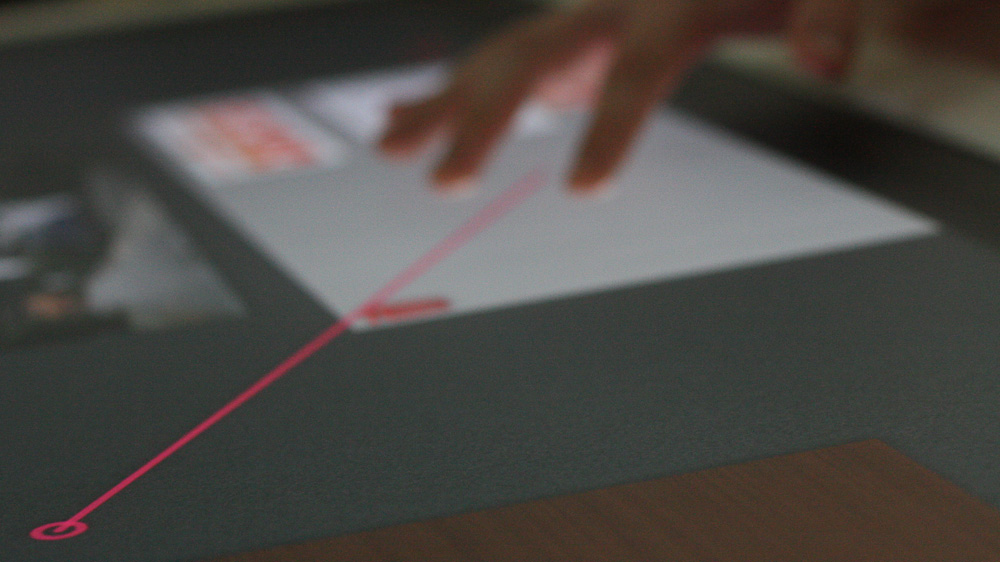In the course of his Master thesis at the Hochschule RheinMain, Tim Hofmann researched the possibilities of collaborative gestures on tabletop user interfaces. I supervised his thesis and am really impressed what Tim has created.
Above, you can see a video with exemplary interaction of Tim’s work. Unfortunately, the sub-titles are written in German, but hopefully you can also understand the video if you do not speak German ;) In the video, the users present Tim’s collaborative gestures that are integrated into a showcase in which multiple users can perform a collaborative security training. In such a training, the users analyze the video in the display’s center regarding potential dangers. As soon as they discover a dangerous situation, they make a screenshot of the video and attach symbols to the video depicting the discovered danger. At the end of the video, users discuss the video and their findings with an instructor.
Regarding the collaborative gestures, every user has their own workspace and all components like symbols, screenshots etc. belong to the user, who created them. However, by employing the collaborative gestures, these components can change their owners. After requesting a component, the owning user may choose to accept or reject the request. Furthermore, the gestures support big tabletop system where users do not have physical access to all parts of the display. By employing one of the remote reach metaphors (ray, portal, miniature map etc.), a user can request a component without actually having to walk or reach over to that component.
If you want, you can read our (German) paper about Kollaborative Gesten für Tabletop-User-Interfaces.

